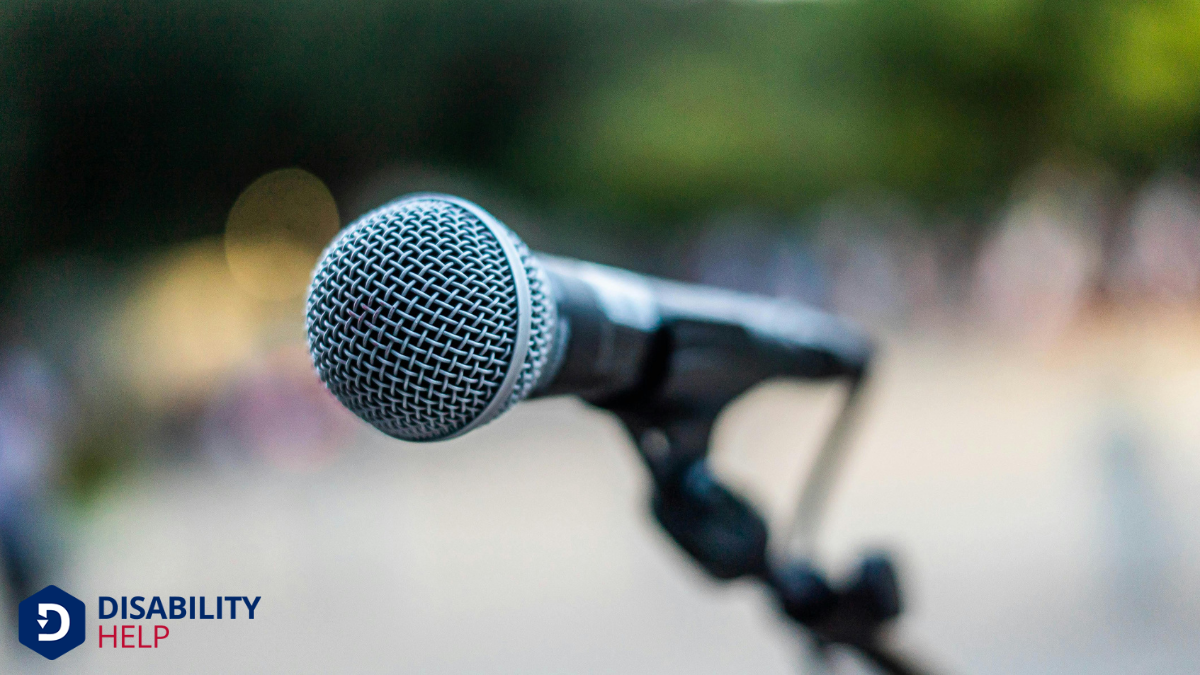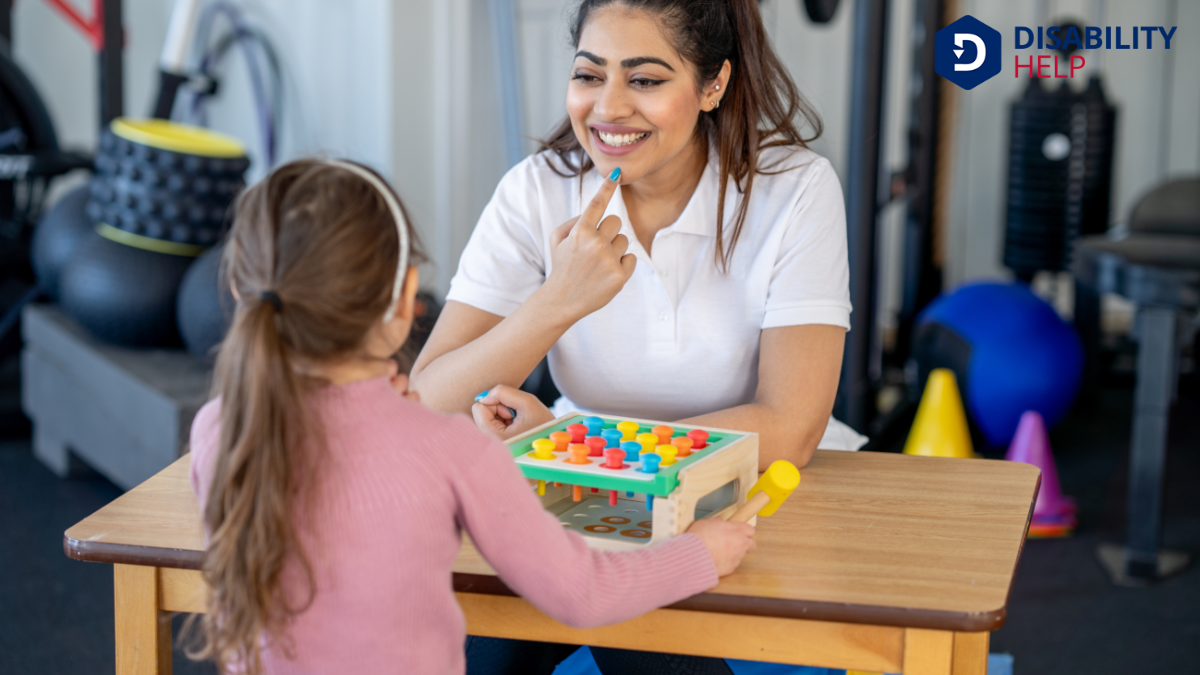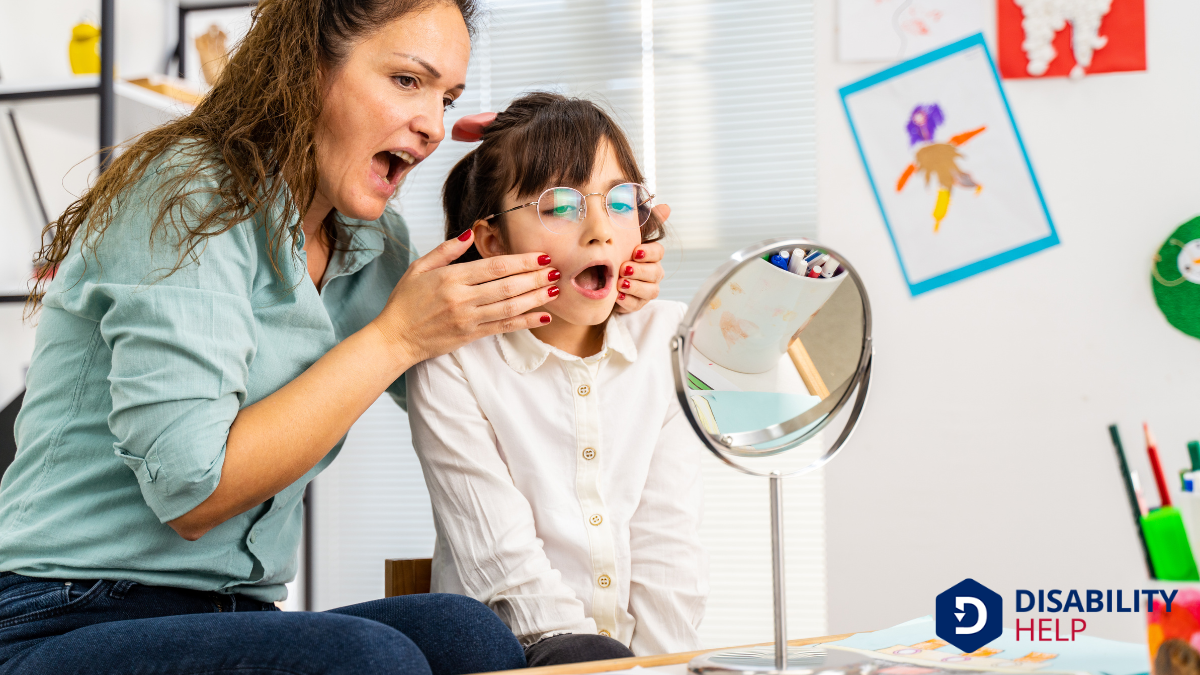Let's explore speech generating devices (SGDs) and their role in aiding individuals with speech impairments. These remarkable tools convert text or symbols into spoken language, enabling effective communication. From simple apps to advanced machines, SGDs are tailored to meet diverse needs, helping users express themselves and engage socially. They play a vital role in bridging the communication gap, but how exactly do they work and what makes them so adaptable?
Key Takeaways
- Speech Generating Devices (SGDs) convert text or symbols into audible speech for individuals with speech impairments.
- SGDs range from simple applications to sophisticated machines tailored to diverse communication needs.
- These devices utilize text-to-speech software or pre-recorded messages to facilitate communication.
- SGDs play a crucial role in enhancing communication for individuals with conditions like autism, cerebral palsy, and ALSAmyotrophic Lateral Sclerosis, a progressive neurodegenerative disease affecting nerve cells in the ....
- Future advancements in SGDs include AI, machine learning, voice customization, and real-time translation features.
Understanding Speech Generating Devices
Let's explore understanding speech generating devices, an essential tool for those who struggle with verbal communication.
These devices convert text or symbols into speech, bridging the gap for individuals with speech impairments.
It's understood that these tools can range from simple apps to sophisticated machines, tailored to meet diverse needs.
The History and Evolution of SGDs

Let's explore how speech generating devices have evolved from simple communication tools to sophisticated technology.
Early on, these devices were rudimentary, but technological advancements have dramatically transformed their capabilities.
As we journey through this history, we'll see the profound impact these changes have had on the lives of those who rely on them.
Early Communication Tools
Although communication has always been a fundamental human need, the journey to develop effective tools for those unable to speak has been long and evolving.
Early communication tools laid the foundation for what would become modern speech generating devices. Before technology, we relied on simple yet effective methods to help individuals express their needs and thoughts.
Some of these early tools included:
- Picture boards: Users pointed to images representing words or phrases.
- Alphabet boards: Allowed users to spell out words by pointing to letters.
- Communication books: Collections of symbols and pictures for conveying messages.
- Gestures and sign language: Non-verbal ways to communicate basic needs.
- Tangible symbols: Objects representing specific concepts or needs.
These tools represented our initial steps towards inclusive communication, paving the way for future innovations.
Technological Advancements Impact
Building on the foundation laid by early communication tools, we enter an era where technology considerably transforms speech generating devices (SGDs).
We've seen remarkable advancements, from bulky machines to sleek, portable gadgets. Touchscreens and intuitive interfaces make SGDs more user-friendly, allowing individuals to communicate more naturally.
Now, SGDs incorporate predictive text and artificial intelligence, anticipating user needs and speeding up communication. Bluetooth and Wi-Fi connectivity allow seamless integration with other devices, enhancing the user experience.
These innovations mean we're not just providing a voice but offering a personalized communication journey.
With each technological leap, SGDs become more accessible and efficient, empowering users to express themselves fully.
We’re witnessing a transformation that not only amplifies voices but also enriches lives.
Types of Speech Generating Devices
Speech generating devices (SGDs) come in a variety of forms to cater to different needs and preferences. As we explore the different types, let's consider how each serves unique communication requirements.
- Dedicated Devices: These are specifically designed for communication, offering robust, reliable solutions without distractions.
- Tablets and Apps: Many find versatility in tablets with communication apps, providing flexibility and ease of updates.
- Text-to-Speech Software: This option converts typed text into spoken words, ideal for those with good typing skills.
- Single-Message Devices: Perfect for conveying simple, repeated messages quickly and efficiently.
- Eye-Tracking Systems: These allow users to control the device using eye movements, offering independence for individuals with severe physical limitations.
Each type offers distinct advantages, ensuring everyone finds a suitable SGD to enhance communication.
How SGDs Work
Understanding how speech generating devices (SGDs) work allows us to appreciate their impact on communication. At their core, SGDs convert text or symbols into spoken words, bridging gaps for individuals with speech impairments.
We begin by selecting words or phrases from a customizable interface, often using a touchscreen, keyboard, or switches. The device, equipped with synthetic voices, transforms these inputs into audible speech.
Some SGDs use pre-recorded messages, while others utilize text-to-speech technology for more flexibility. The advanced software in these devices often predicts words, making communication faster and more efficient.
With built-in features like volume control and voice customization, SGDs guarantee that the user's message is conveyed clearly. By understanding these functionalities, we can see how SGDs empower users to express themselves.
Customizing SGDs for Individual Needs

A key aspect of making speech generating devices truly effective is customization, as no two individuals have the same communication needs.
Together, we can tailor these devices to better serve each user. Let’s consider some customization options:
- Vocabulary Selection: We choose words and phrases that match the user's daily interactions.
- Voice Personalization: Selecting a voice that resonates with the individual's identity can make communication feel more personal.
- Layout Adjustment: Arranging buttons and symbols for ease of access guarantees smoother communication.
- AccessibilityThe design of products, devices, services, or environments to be usable by people with disabilities.... Features: We can integrate switches or touchscreens based on physical abilities.
- Integration with Other Devices: Connecting SGDs with smartphones or tablets can enhance their functionality.
The Role of SGDs in Autism
When it comes to supporting individuals with autism, speech generating devices (SGDs) play an essential role in enhancing communication.
It's understood that many individuals with autism face challenges in expressing themselves verbally, which can lead to frustration and isolation.
SGDs offer a voice to those who may struggle to find their own, enabling them to communicate needs, feelings, and thoughts more effectively.
SGDs and Cerebral Palsy
While many of us might take spoken communication for granted, individuals with cerebral palsy often face significant hurdles in this area.
Speech generating devices (SGDs) provide an essential bridge to communication, empowering those with cerebral palsy to express themselves more effectively. These devices can enhance the quality of life, fostering independence and social interaction.
Here’s how SGDs can help:
- Facilitate Expression: They allow users to convey thoughts and needs clearly.
- Boost Confidence: By improving communication, users often gain self-esteem.
- Promote Social Interaction: SGDs enable easier participation in conversations.
- Support Education: They assist in academic settings by helping students express ideas.
- Increase Autonomy: Users can make choices and decisions independently.
Together, let’s advocate for accessible communication tools that transform lives.
SGDS for Individuals With ALS

Despite the progressive challenges that come with Amyotrophic Lateral Sclerosis (ALS), speech generating devices (SGDs) offer an essential lifeline to communication for those affected. ALS gradually affects muscle control, making verbal communication difficult, if not impossible, over time.
We recognize how important it's for individuals with ALS to express themselves, share ideas, and maintain relationships. SGDs provide a voice when speech becomes strained or lost.
These devices come equipped with advanced technologies, such as eye-tracking and switch access, allowing users to select words or phrases using minimal movement. This adaptability guarantees that communication remains possible even as physical abilities change.
The Impact of SGDs on Communication
Let's explore how speech generating devices (SGDs) enhance our interpersonal connections by breaking down communication barriers.
These devices empower individuals who struggle with verbal communication, allowing them to express thoughts and emotions more freely.
Together, we can see the profound impact SGDs have on fostering meaningful relationships.
Enhancing Interpersonal Connections
When we explore the impact of Speech Generating Devices (SGDs) on communication, it's clear these tools are revolutionizing the way individuals connect with one another.
SGDs foster deeper interpersonal connections by enabling more meaningful interactions. With these devices, people who face speaking challenges can engage in conversations that enrich their social lives.
Let's consider how SGDs enhance our connections:
- Facilitate real-time communication: They allow for immediate responses, keeping conversations fluid.
- Express emotions: Users can convey feelings and nuances, making interactions more personal.
- Foster independence: They empower individuals to voice thoughts without relying on others.
- Strengthen social bonds: Regular communication helps build and maintain relationships.
- Increase participation: Users can join group discussions, feeling included and valued.
SGDs truly transform how we connect and communicate.
Overcoming Communication Barriers
While it's often challenging to overcome communication barriers, Speech Generating Devices (SGDs) offer a powerful solution that breaks down these obstacles.
With SGDs, we can empower individuals with speech impairments to express their thoughts and needs effectively. These devices translate text or symbols into spoken words, allowing users to engage more fully with those around them.
Imagine the frustration of having something important to say but no way to say it. SGDs relieve that frustration by providing a voice to those who need it most. They foster independence, improve social interactions, and open up educational and professional opportunities.
As we embrace SGDs, we take significant steps towards inclusivity, ensuring everyone has the chance to communicate and connect with the world.
Future Trends in Speech Generating Technology
As we look ahead to the future of speech generating technology, it’s clear that rapid advancements in artificial intelligence and machine learning are set to revolutionize the field.
We’re on the brink of exciting developments that will enhance communication for many. Here’s what we can expect:
- Natural Language Processing: Improved algorithms will make interactions more fluid and intuitive.
- Voice Customization: Users will have more options to personalize their device voices to match their preferences.
- Real-Time Translation: Devices will soon offer seamless translation features, breaking down language barriers.
- Wearable Devices: Compact and portable options will make communication even more accessible.
- Integration with Smart Home Technology: Linking devices with smart home systems will offer users greater control and convenience.
These trends promise to empower users like never before.
Conclusion
In exploring the world of Speech Generating Devices, we've seen how these tools transform lives. They empower individuals with speech impairments, offering a voice where there once was silence. By understanding their history, types, and customization options, we appreciate their crucial role in bridging communication gaps. As technology advances, SGDs will continue to evolve, offering even more innovative solutions. Let's embrace this progress and support the journey towards more inclusive communication for everyone.






